Social Life and Indian Cartoonists: Indian cartoonists have played a significant role in shaping public opinion, commenting on societal issues, and entertaining audiences through their art. While their work is often in the public eye, the social life of Indian cartoonists is influenced by various factors, including cultural expectations, professional pressures, and the unique demands of balancing creative expression with social responsibilities. Here’s an exploration of the social life of Indian cartoonists, considering how they navigate their personal and professional worlds.
The Historical Backdrop
Cartooning in India traces its roots to the colonial era, when early artists like Gaganendranath Tagore used caricature to critique the British Raj and the social inequities of the time. In the pre-independence period, cartoons were both a form of protest and a powerful means of mass communication. The work of Kesava Shankar Pillai—popularly known as Shankar—brought political cartooning to national prominence. His Shankar’s Weekly, launched in 1948, was India’s response to Britain’s Punch, providing a bold and independent space for political and cultural satire.
Post-independence, cartoonists like R. K. Laxman, Abu Abraham, Mario Miranda, and later, Sudhir Tailang, carried forward this tradition, each with their distinctive styles and subject matter. Their cartoons weren’t just entertainment—they were incisive commentaries that captured the emotional and political pulse of an evolving nation. Their work often bridged linguistic and regional divides, becoming iconic symbols of Indian public life.
The Cultural Canvas
India’s social landscape is kaleidoscopic—shaped by centuries of interwoven histories, religions, and traditions. For cartoonists, this presents an inexhaustible repository of inspiration, but also cultural minefields to navigate. A cartoonist must tread the tightrope between satire and offense, balancing critique with cultural sensitivity. What may appear humorous or thought-provoking in one context could be deemed offensive in another.
The challenges are manifold: regional dialects and idioms, religious iconography, caste dynamics, and socio-political allegiances—all these factors inform the reception of a cartoon. Symbols, attire, and expressions can carry different connotations across states, making it imperative for cartoonists to be perceptive, well-informed, and culturally literate.
Yet this very complexity is a creative goldmine. Indian cartoonists frequently draw from epics like the Mahabharata and Ramayana, reinterpret folk tales, and embed street culture, Bollywood references, and cricket metaphors into their work. The richness of India’s cultural context allows cartoonists to use localized storytelling to reach a broad, multilingual audience. This form of visual communication transcends barriers, speaking to people who may otherwise be disengaged from mainstream political discourse.
1. Cultural Context and Social Influence
Role of Tradition and Modernity
India is a country where tradition and modernity coexist, and this duality is often reflected in the work of Indian cartoonists. Their social lives are similarly influenced by this balance:
- Tradition: Many Indian cartoonists come from backgrounds where traditional values, such as respect for elders, family obligations, and community ties, play a crucial role. These values can influence the subjects they choose to address in their work and how they engage with their audience.
- Modernity: On the other hand, modern Indian cartoonists are increasingly influenced by global trends, digital media, and contemporary issues. This can lead to a more progressive outlook in their personal and social lives, as they interact with a diverse audience through social media and other platforms.

Impact of Social Commentary
Cartoonists in India often use their art to comment on social and political issues. This role as a social commentator can impact their social lives in several ways:
- Public Recognition: Well-known cartoonists often enjoy a certain level of public recognition, which can open doors to social circles within media, politics, and the arts. However, it can also lead to scrutiny or criticism, especially if their work touches on sensitive topics.
- Responsibility: Many cartoonists feel a responsibility to use their platform to address important issues. This sense of duty can influence their social interactions, as they may engage in discussions and debates about the topics they cover in their work.
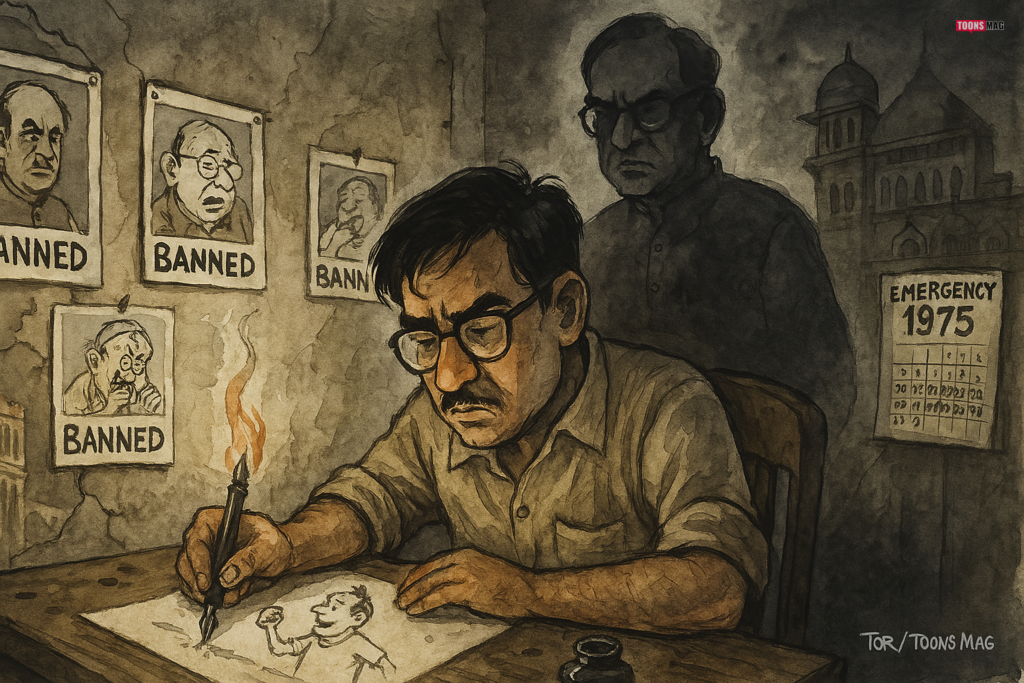
Interaction with Editors and Publishers
For Indian cartoonists, professional relationships with editors and publishers are a significant aspect of their social lives:
- Collaboration: Working closely with editors, cartoonists must balance their creative vision with the editorial direction of the publication. These professional relationships often extend into social interactions, such as networking events, industry gatherings, and collaborative projects.
- Negotiation: Cartoonists often negotiate contracts, deadlines, and the scope of their work with publishers. These negotiations require a level of social acumen, as they navigate the business side of their careers while maintaining creative freedom.
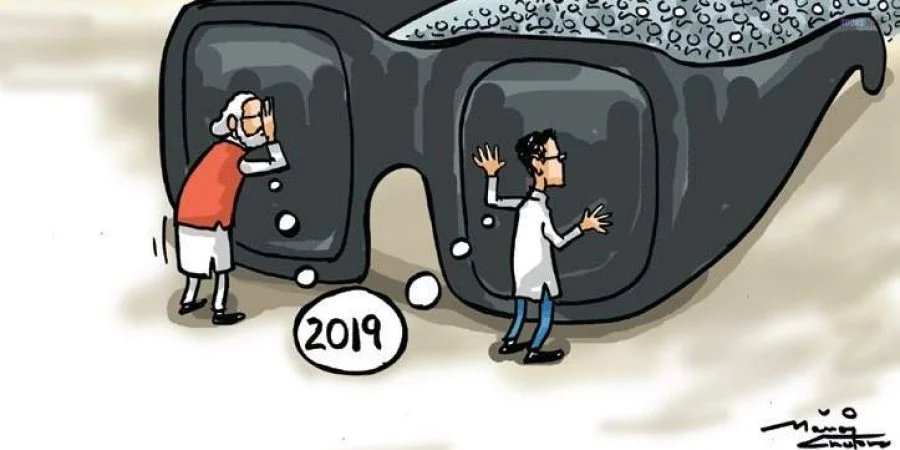
Engagement with Fellow Cartoonists
The community of Indian cartoonists is relatively close-knit, with many artists knowing each other through professional associations, workshops, and social media:
- Peer Support: Many cartoonists form supportive networks with their peers, sharing advice, feedback, and encouragement. This camaraderie can be an essential part of their social life, providing a sense of belonging in a challenging profession.
- Friendly Rivalries: While there is camaraderie, there can also be friendly rivalries, especially among cartoonists who work in similar genres or for competing publications. These rivalries can be motivating but may also influence social dynamics within the community.
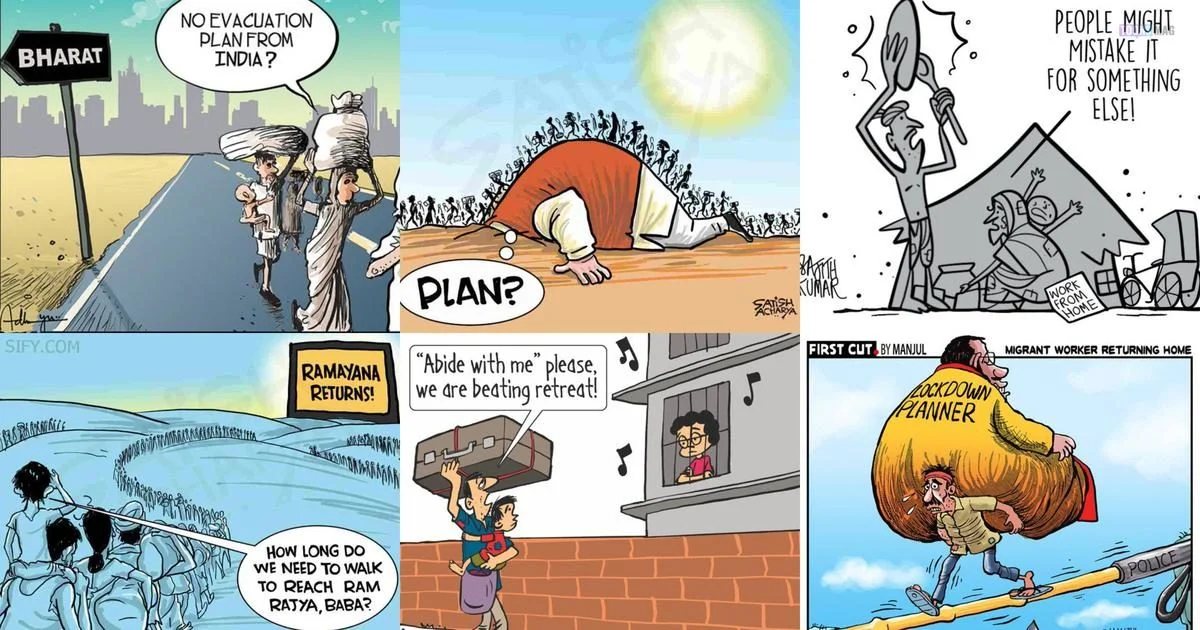
3. Balancing Personal and Professional Life
Family and Social Obligations
Like anyone else, Indian cartoonists have personal lives that include family responsibilities, social obligations, and personal interests:
- Family Life: For many cartoonists, balancing work with family life is a priority. This balance can be challenging, especially when deadlines loom or when their work requires them to stay updated on current events constantly.
- Social Engagements: Attending social events, maintaining friendships, and participating in community activities are all part of a cartoonist’s social life. However, the demands of their profession, including the need for solitude and focus, can sometimes make it difficult to maintain these relationships.
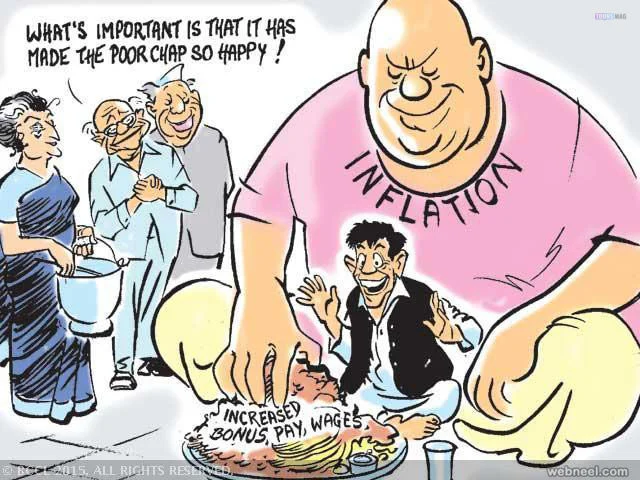
Time Management
Effective time management is crucial for cartoonists, who must juggle multiple projects, deadlines, and the demands of their personal lives:
- Work-Life Balance: Cartoonists often work from home or have flexible schedules, which can blur the lines between personal and professional time. Managing this balance requires discipline and clear boundaries.
- Creative Solitude vs. Social Interaction: While creativity often requires solitude, social interaction can provide inspiration and new ideas. Cartoonists must find the right balance between these two aspects of their lives to stay productive and engaged.
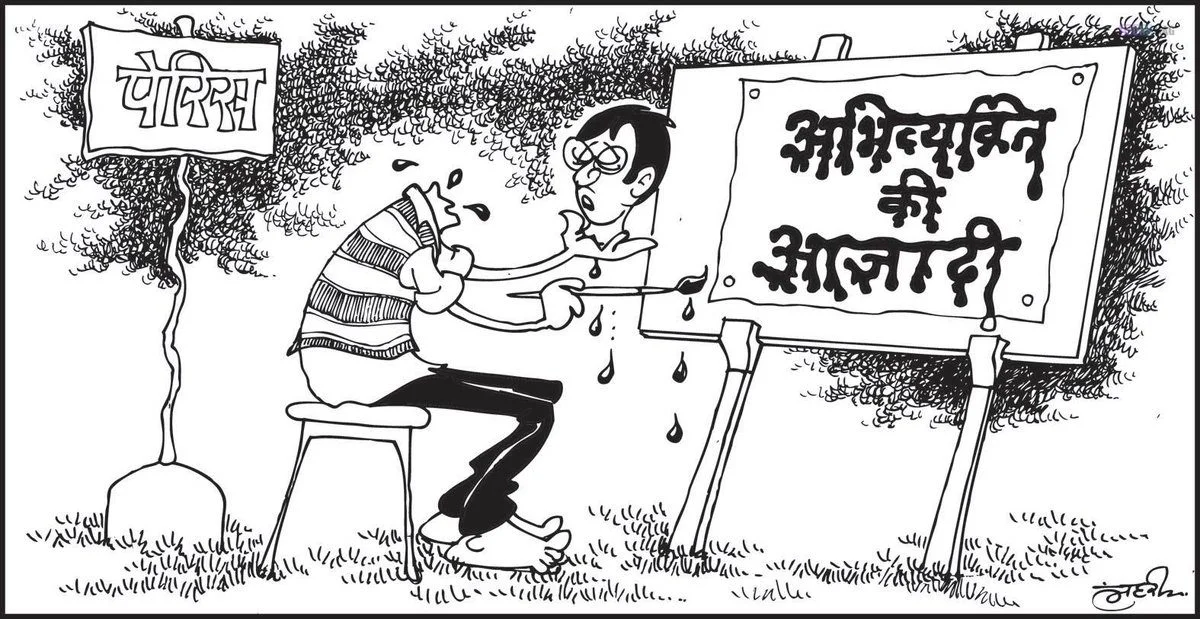
4. Influence of Social Media and Digital Platforms
Online Presence and Interaction
In the digital age, social media plays a significant role in the lives of Indian cartoonists:
- Building a Following: Many cartoonists use platforms like Instagram, Twitter, and Facebook to share their work, build a following, and engage with fans. This online interaction can enhance their social life, connecting them with a broader audience and fellow artists.
- Managing Criticism: The visibility of social media also means that cartoonists are more exposed to public criticism. Handling negative feedback and navigating online controversies are part of the social dynamics they must manage.
Digital Communities
Digital platforms have also enabled the formation of online communities where cartoonists can share their work, collaborate, and discuss industry trends:
- Networking: Online communities provide opportunities for networking with other cartoonists, both within India and internationally. These connections can lead to collaborations, new opportunities, and professional growth.
- Support Systems: For cartoonists working in isolation, online communities can provide much-needed support, advice, and encouragement. These digital interactions often complement their in-person social lives, creating a more robust support network.
5. Challenges and Opportunities
Censorship and Freedom of Expression
Indian cartoonists often face challenges related to censorship and the boundaries of free expression:
- Navigating Sensitivity: While cartoons are a powerful tool for social commentary, they can also provoke strong reactions, especially when they touch on religious, political, or cultural sensitivities. Cartoonists must navigate these challenges carefully, balancing their desire to express themselves with the potential consequences of their work.
- Opportunities for Dialogue: Despite these challenges, cartoonists also have opportunities to spark dialogue and bring attention to important issues. Their work can lead to discussions in both online and offline social circles, contributing to the broader conversation on freedom of expression in India.
Cultural Representation
Indian cartoonists have the opportunity to represent and explore the diverse cultural landscape of India through their work:
- Cultural Diversity: By drawing on India’s rich cultural diversity, cartoonists can create work that resonates with different communities and reflects the complexities of Indian society.
- Social Commentary: Cartoonists can use their platform to comment on cultural trends, societal norms, and the impact of globalization on Indian culture. This role as a cultural commentator can influence their social interactions and the way they are perceived by others.
6. The Social Life of Indian Cartoonists
The social life of Indian cartoonists is shaped by a unique blend of cultural expectations, professional demands, and personal responsibilities. As artists who often work in solitude but engage with a wide audience, cartoonists navigate a complex social landscape that includes family obligations, professional relationships, and public interaction. While their work can bring them public recognition and influence, it also comes with challenges such as managing criticism, balancing work and life, and navigating the boundaries of free expression. Ultimately, the social life of an Indian cartoonist is a reflection of the broader cultural and social dynamics of the country, offering a fascinating insight into how creativity and society intersect in the world of cartooning.
Social Commentary and Censorship
Cartooning by its very nature is subversive—it punctures egos, critiques the powerful, and often communicates uncomfortable truths with wit and economy. In India, this has led to both acclaim and controversy. During the Emergency (1975–77), a period of suspended civil liberties, cartoonists and journalists faced intense censorship. Shankar’s Weekly was shut down, and many artists were compelled to self-censor or face repercussions.
Even in contemporary times, cartoonists have faced legal threats, arrest, and online harassment. Aseem Trivedi’s arrest in 2012 under charges of sedition is a prominent example of the state’s uneasy relationship with satire. The rise of digital platforms has democratized publishing but has also made cartoonists vulnerable to doxing, trolling, and organized smear campaigns.
Still, cartoonists persevere. Digital media has also empowered them to reach wider audiences, experiment with formats (GIFs, animations, social media reels), and establish direct relationships with their followers. Some have turned to crowdfunding to sustain their work, sidestepping traditional media constraints.
Social Life and Public Engagement
The social lives of Indian cartoonists often mirror their creative ethos—observational, analytical, and deeply embedded in the rhythms of everyday life. While some remain reclusive observers, others engage actively in social and political life. Bal Thackeray, before founding the Shiv Sena, was a political cartoonist whose art reflected his ideological leanings. Sudhir Tailang often addressed contemporary political developments with sharp humor, earning both praise and criticism.
Cartoonists also serve educational and civic functions. Many conduct workshops in schools and colleges, encouraging young people to explore satire as a means of expression. Institutions such as the Indian Institute of Cartoonists, the Kerala Cartoon Academy, and the Maya Kamath Memorial Awards have become important nodes in promoting the art of cartooning. Shankar’s International Children’s Competition remains a beacon for nurturing talent and promoting global exchange among young artists.
Exhibitions, public lectures, and collaborative art events have further opened up the space for cartoonists to connect with diverse audiences. These engagements go beyond humor; they introduce audiences to the sociopolitical potency of satire and the responsibilities that come with wielding that power.
Representation and Inclusion
Historically, Indian cartooning has been a male-dominated field. However, the landscape is changing, albeit slowly. Pioneers like Maya Kamath laid the foundation for greater gender diversity, and today, artists like Rachita Taneja (creator of Sanitary Panels) and Priya Kuriyan are making waves with their socially conscious and visually compelling work. Their cartoons challenge entrenched norms and explore themes often neglected by traditional media: gender, sexuality, mental health, and environmental justice.
Additionally, the linguistic and regional diversity of Indian cartooning has enriched the medium. Vernacular cartoonists, working in Malayalam, Tamil, Bengali, Hindi, and other languages, capture hyper-local issues with sharp insight. These regional voices provide a counterbalance to the metropolitan gaze, offering grassroots perspectives that are crucial to a fuller understanding of the Indian experience.
Emerging platforms have allowed these voices to find national and even international audiences. Webcomics and zines in local languages, graphic narratives based on oral histories, and political cartoons addressing regional governance have expanded the thematic breadth of Indian cartooning.
Creativity with Conscience
To be a cartoonist in India is to embrace a complex role—part artist, part commentator, part cultural archivist. It requires not just artistic skill, but also cultural empathy, historical insight, political awareness, and a moral compass. In a society as multifaceted as India, the cartoonist is more than just a humorist; they are vital chroniclers of the nation’s pulse.
Navigating creativity in India’s cultural context demands resilience, adaptability, and above all, courage. Despite censorship, social media backlash, and institutional indifference, Indian cartoonists continue to produce work that is thoughtful, bold, and impactful. Their lines, though drawn in ink, often carry the weight of resistance, change, and hope.
As India evolves, so too does the space for visual satire. And in that evolving space, cartoonists—through just a few carefully drawn strokes—continue to ignite conversations, question authority, and inspire a more critically engaged society.
Frequently Asked Questions about Social Life and Indian Cartoonists
- Cultural Insights: Social life provides Indian cartoonists with a rich array of cultural, social, and political insights, which can inspire and inform their cartoons.
- Social Issues: Engagement with current events and societal issues helps cartoonists address relevant themes and offer commentary on pressing matters.
- Networking: Social interactions with peers, clients, and the public can lead to collaborations, new opportunities, and exposure.
What role does community play in the success of Indian cartoonists?
- Support Networks: Being part of a community provides emotional and professional support, fostering growth and resilience.
- Collaborations: Community involvement can lead to collaborative projects, exhibitions, and joint ventures that enhance visibility and career opportunities.
- Mentorship: Experienced cartoonists often mentor emerging talents, providing guidance and helping them navigate the industry.
- Time Management: Effective time management and setting clear boundaries between work and personal life can help maintain a healthy balance.
- Prioritization: Prioritizing tasks and scheduling regular breaks can prevent burnout and ensure that social engagements do not negatively impact professional responsibilities.
- Integration: Integrating social activities into professional life, such as attending industry events or socializing with fellow artists, can create synergy between personal and career goals.
- Work-Life Balance: The demanding nature of cartooning, with tight deadlines and extended work hours, can sometimes lead to challenges in maintaining a balanced social life.
- Public Perception: Cartoonists may face criticism or misunderstanding from the public regarding their work, which can affect their social interactions.
- Isolation: The solitary nature of cartooning can lead to periods of isolation, making it important for cartoonists to actively seek social interactions and networking opportunities.
- Networking: Social media platforms enable cartoonists to connect with other artists, industry professionals, and potential clients, expanding their professional network.
- Showcasing Work: Regularly sharing work on social media helps build an audience, gain feedback, and attract new opportunities.
- Engagement: Engaging with followers, participating in relevant conversations, and joining online communities can foster relationships and increase visibility.
- Art Festivals: Events like the Bangalore Comic Con or Mumbai’s Kala Ghoda Arts Festival provide platforms for cartoonists to showcase their work and connect with fans and peers.
- Workshops and Seminars: Industry workshops, seminars, and conferences offer opportunities for learning, networking, and collaboration.
- Social Media Groups: Online forums, Toons Mag, Cartoonist Network, Easybie, Facebook groups, and Twitter communities dedicated to cartoonists and artists facilitate social interaction and exchange of ideas.
- Cultural Richness: India’s diverse cultural landscape provides a vast array of subjects and themes for cartoonists to explore and depict.
- Political Climate: The dynamic political environment influences the content and tone of cartoons, reflecting social commentary and satire.
- Social Issues: Cartoonists often address local and national social issues, using their work to raise awareness and provoke thought.
- Building Relationships: Developing strong professional relationships through social interactions can lead to collaborations, job opportunities, and exposure.
- Participating in Events: Engaging in social and cultural events can increase visibility and provide platforms for showcasing work to a wider audience.
- Gathering Inspiration: Social interactions and experiences can serve as valuable sources of inspiration for new ideas and perspectives in cartooning.
- Cartoonist Associations: Organizations such as the Cartoonists’ Club of India offer networking opportunities, events, and resources for cartoonists.
- Professional Networks: Online platforms and local artist groups facilitate connections among cartoonists, providing support and collaboration opportunities.
- Mentorship Programs: Some organizations and institutions offer mentorship programs that connect emerging cartoonists with experienced professionals for guidance and support.
- Maintain Privacy: Set boundaries to protect personal privacy while engaging with the public and media.
- Stay Grounded: Focus on maintaining genuine relationships and staying connected to personal interests and values.
- Manage Public Interactions: Handle public interactions professionally while ensuring that they do not overly interfere with personal time and social life.
By understanding and navigating the intersection of their social lives and professional careers, Indian cartoonists can enhance their creativity, build meaningful connections, and achieve success in their field.
This post was created with our nice and easy submission form. Create your post!




